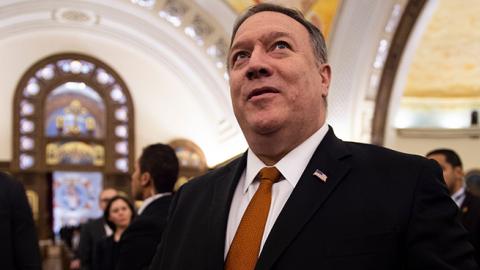As Secretary of State Mike Pompeo concludes his swing through the Middle East, the Trump administration’s regional strategy is coming into view. Like President Obama, President Trump wants to reduce American commitments while promoting stability. But their strategies differ. Mr. Obama thought the best hope for a reduced U.S. footprint was conciliating Iran. Mr. Trump, by contrast, seeks to build a coalition of U.S. regional allies—even if those allies fall well short of perfection—that can provide a stable security architecture and offset Iranian strength as the U.S. steps back.
In seeking a reduced Middle East presence and retreating from expansive human-rights goals, both Team Obama and Team Trump have reacted to significant changes in American politics. Public support for U.S. military action and democracy promotion in the Middle East has all but collapsed, for two reasons. First, decades of engagement in the region have brought neither stability nor democracy. Second, as America’s dependence on Middle East energy recedes, many voters see less reason to prioritize the region. Pundits can argue that these reactions are shortsighted, but politicians must take them into account.
Read the full article on the Wall Street Journal's website "here":https://www.wsj.com/articles/trumps-mideast-strategy-11547509876?mod=se…
















